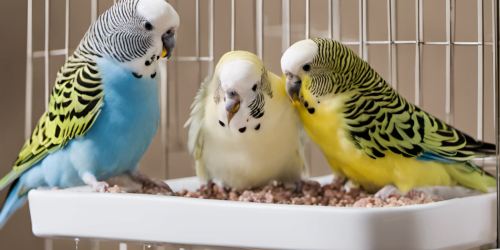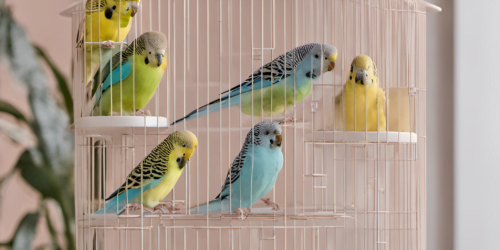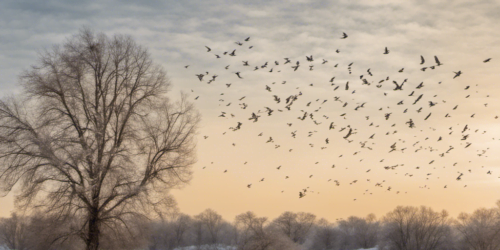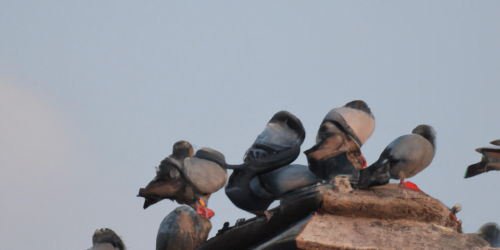The Perfect Pigeons Habitat in 2023
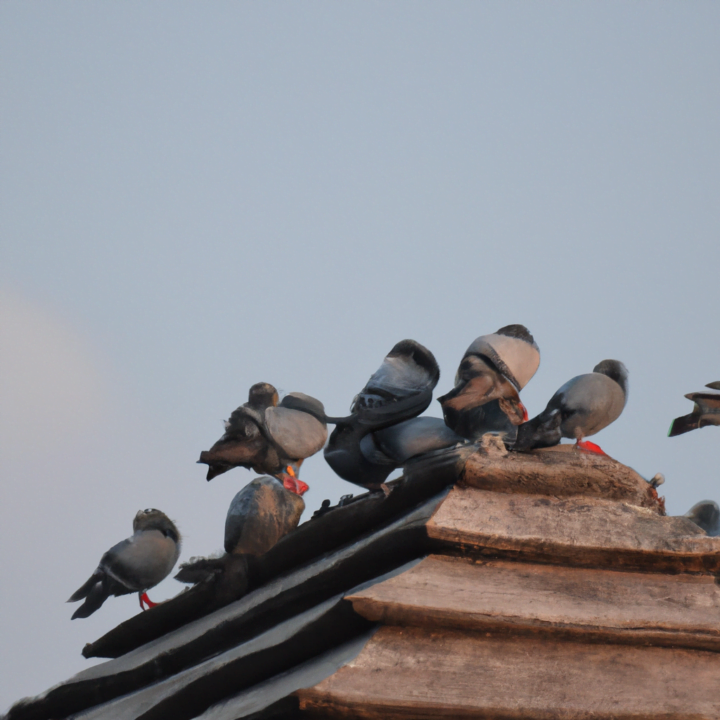
When we think of pigeons, we often envision them in urban landscapes, perching on city buildings and pecking at crumbs on busy sidewalks. However, pigeons are not limited to cities alone.
They can be found in a variety of habitats, both natural and man-made, showcasing their adaptability and survival skills.
In this article, we will explore the different pigeons habitats, from urban environments to rural landscapes and everything in between.
Urban Landscapes
Table Of Contents
In urban environments, pigeons have become synonymous with city life. Often referred to as “city pigeons,” these birds have learned to thrive in the hustle and bustle of urban landscapes.
City Pigeons
City pigeons, also known as feral pigeons, are descendants of domesticated pigeons. Over time, they have adapted to urban environments, becoming less dependent on humans for food and shelter.
Urban Pigeons Habitat
The urban pigeons habitat encompass a range of structures and spaces within cities. Pigeons can be found nesting on rooftops, ledges, and even in the crevices of buildings. These areas provide protection from predators and exposure to the elements.
Pigeon Nesting in Cities
Pigeons are prolific nesters and can create nests in various locations around cities. They often choose spots that are elevated, such as on building ledges or under bridges. These nesting sites provide safety and security for their offspring.
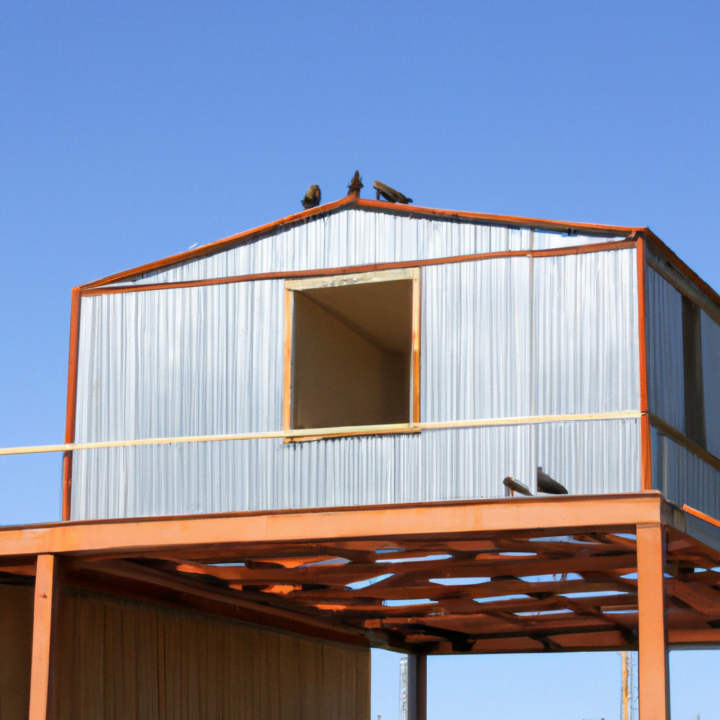
Rooftop Nesting Sites
Rooftops are popular nesting sites for pigeons in urban areas. The flat surfaces and available ledges make for ideal nesting spots.
Additionally, rooftops provide a vantage point for pigeons to survey their surroundings and locate food sources.
Pigeon-Friendly Buildings
Some buildings are unintentionally pigeon-friendly due to architectural features that provide shelter and nesting opportunities. Cornices, eaves, and balconies often serve as attractive locations for pigeon nests. These buildings inadvertently support pigeon populations in urban areas.
Natural Pigeons Habitats
Despite their association with cities, pigeons have natural habitats where they thrive and exhibit their natural behaviors. Let’s explore these natural environments in which pigeons can be found.
Pigeons Natural Environment
In their natural environment, pigeons can be found in a wide range of habitats. They have adapted to various climates and landscapes, making them a versatile species.
Woodland Pigeons Habitat
Pigeons can be found in wooded areas, where they roost and nest in trees. Woodland habitats provide ample food sources, such as seeds, berries, and insects, making them an ideal home for pigeons.
Cliff Nesting Pigeons
Some pigeon species, such as the rock pigeon, have a natural affinity for rocky cliffs. These birds nest in the crevices and ledges of cliffs, using the rugged terrain as protection from predators and harsh weather conditions.
Rural Habitats for Pigeons
In rural areas, pigeons can be found in agricultural landscapes, fields, and meadows. These habitats offer open spaces and access to abundant food sources, such as grains and seeds found in crops.
Pigeon Roosting in Forests
Forests provide pigeons with dense foliage and trees that offer shelter and nesting sites. Pigeons may use the tree canopy for roosting and nesting, where they can find protection and safety in the dense vegetation.
Nesting Preferences
Understanding the nesting preferences of pigeons can provide insight into their habitat choices and behaviors.
Pigeon Nests
Pigeons build nests from twigs, leaves, and grass. These nests are relatively simple in structure, offering a shallow cup-shaped structure for their eggs and chicks.
Nesting Materials for Pigeons
Pigeons utilize a variety of materials to construct their nests. They gather sticks, leaves, grass, and other available materials in their environment.
Pigeon Nesting Habits
Pigeons are year-round nesters, building nests whenever suitable conditions arise. They are opportunistic and will take advantage of available nesting sites, whether in cities or natural habitats.
Nesting Season for Pigeons
Pigeons do not have a specific nesting season. They can breed throughout the year, especially in favorable conditions where food and shelter are abundant.
Pigeon Nesting Behavior
Pigeons exhibit dedicated parenting behavior, with both male and female pigeons taking turns incubating the eggs and caring for the chicks. They are protective of their nests and will defend them from intruders.
Food and Feeding
Pigeons have diverse feeding habits that vary depending on their environment, but they are opportunistic feeders and can adapt to different food sources.
Pigeon Feeding Habits
Pigeons are primarily seed eaters and forage on the ground. They peck at the ground, searching for seeds, grains, and other edible plant material.
Pigeon’s Diet in the Wild
In natural pigeons habitats, pigeons have access to a variety of food sources. They consume seeds, grains, fruits, berries, and even small insects and worms they stumble upon.
Natural Food Sources for Pigeons
Pigeons depend on the availability of natural food sources, such as plants, fruits, and seeds found in their habitats. These food sources provide the necessary nutrients for their survival.
Pigeon Food Preferences
Pigeons have a preference for grains and seeds due to their high nutritional value. However, they are adaptable and will consume other food sources if necessary.
Feeding Pigeons in Urban Areas
In urban areas, pigeons often rely on human-provided food, such as bread crumbs and other scraps.
While feeding pigeons can be enjoyable for some, it is essential to provide them with nutrient-rich food options that mimic their natural diet.
It might not be the perfect pigeons habitat but with the food provided it helps.
Adaptability and Survival
Pigeons are highly adaptable creatures, capable of surviving in various habitats and withstanding environmental changes.
Pigeon Species’ Adaptability
Pigeon species have shown remarkable adaptability to new environments. This adaptability allows them to colonize diverse habitats, from urban cities to remote woodlands.
Pigeon’s Ability to Survive in Different Habitats
Pigeons’ ability to survive in different habitats is a testament to their resilience. They have successfully made homes in urban areas, forests, cliffs, and rural landscapes, utilizing available resources.
Pigeons Habitat Changes Over Time
Pigeons adapt their habitat choices based on resource availability and changes in their environment. As landscapes change due to human activities, pigeons may shift their preferences and nesting locations to find the perfect pigeons habitat.
Impact of Urbanization on Pigeons Habitats
Urbanization has transformed landscapes, providing new opportunities for pigeons. The availability of food, nesting sites, and shelter in cities has contributed to the proliferation of pigeon populations in urban areas.
Pigeon Population Dynamics
The pigeon population dynamics are influenced by various factors, including food availability, breeding success, and competition for resources. Understanding these dynamics helps in managing pigeon populations and their impact on different habitats.
In conclusion, pigeons are resilient birds that have adapted to a wide range of habitats. They can be found in urban landscapes, rural areas, and even rocky cliffs.
Their nesting preferences, feeding habits, and ability to adapt have contributed to their survival and thriving populations in various environments.
Whether soaring above cityscapes or perching in natural habitats, pigeons continue to fascinate and coexist with humans in their ever-evolving habitats.
Pigeons Habitat – Where is The Perfect Pigeons Habitat?
We hope you liked our article :- Pigeons Habitat – Where is The Perfect Pigeons Habitat?.
Frequently Asked Questions
1. What is the perfect pigeon’s habitat?
The perfect pigeons habitat can vary depending on the species and location. Pigeons have adapted to various environments, including urban landscapes, rural areas, and rocky cliffs.
The ideal habitat for pigeons provides shelter, nesting sites, and access to food sources.
2. Where can pigeons be found in urban environments?
Pigeons are commonly found in urban areas, such as cities and towns. They inhabit buildings and structures, utilizing rooftops, ledges, and balconies as nesting and roosting sites.
Pigeon-friendly buildings with flat surfaces and nooks often attract larger pigeon populations.
3. What are some natural habitats for pigeons?
In their natural environment, pigeons can be found in woodlands, cliffs, and rural areas. Woodland habitats provide trees for nesting and roosting, while cliff nesting pigeons thrive in rocky landscapes.
Rural pigeons habitats, including forests and fields, offer diverse food sources and more open spaces for pigeons.
4. How do pigeons build their nests?
Pigeons build their nests using a variety of materials, including twigs, leaves, grass, and feathers. They construct their nests on ledges, rooftops, tree branches, or rocky surfaces. Pigeons often reuse and expand existing nests, adding new materials as needed.
5. When do pigeons typically nest?
Pigeon nesting season varies depending on the region, but it generally begins in the spring and can continue throughout the summer. The timing can also be influenced by factors such as temperature and food availability.
6. What do pigeons eat in natural pigeons habitat?
In the wild, pigeons have a diverse diet that includes seeds, grains, fruits, insects, and flowers. They are also known to scavenge for food in urban areas, consuming discarded human food and grains.
7. How adaptable are pigeons to different habitats?
Pigeons are highly adaptable birds and can survive in a wide range of habitats.
They have successfully adapted to urban environments, where they have access to food sources and suitable nesting sites.
However, they also retain their ability to thrive in natural habitats such as woodlands and rural areas.
8. How has urbanization affected pigeon habitats?
Urbanization has had both positive and negative impacts on pigeon habitats.
On one hand, it provides pigeons with abundant food sources and artificial nesting options in buildings.
On the other hand, urbanization can displace natural habitats and lead to an overabundance of pigeons in certain areas, causing potential conflicts with humans.
9. Is the pigeon population stable or dynamic?
The pigeon population dynamics can vary depending on multiple factors, including a pigeons habitat changes, food availability, and human interventions.
While pigeon populations can experience fluctuations, they generally have a stable population due to their adaptability and ability to breed rapidly.
10. Are there any conservation efforts focused on pigeon habitats?
Conservation efforts related to pigeon habitats primarily focus on managing pigeon populations in urban areas and preventing conflicts with humans.
Some cities implement pigeon control programs, while others promote responsible feeding practices and the use of pigeon-friendly architectural designs to coexist with these adaptable birds.
Additional Resources:
